They are otherworldly creatures who glow in the dark, without brains or bones, some reaching 100 feet long.
And they live just off California's coast.
Join two top marine biologists who have devoted their careers to unlocking the mysteries of jellyfish and alien-like siphonophores.
Jellyfish or jellies[1] are the major non-polyp form of individuals of the phylum Cnidaria.
They are typified as free-swimming marine animals consisting of a gelatinous umbrella-shaped bell and trailing tentacles.
The bell can pulsate for locomotion, while stinging tentacles can be used to capture prey.
Jellyfish are found in every ocean, from the surface to the deep sea. Scyphozoans are exclusively marine, but some hydrozoans live in freshwater.
Large, often colorful, jellyfish are common in coastal zones worldwide.
Jellyfish have roamed the seas for at least 500 million years,[2] and possibly 700 million years or more, making them the oldest multi-organ animal.[3]
| Jellyfish Temporal range: 505–0 Ma Cambrian – Recent |
|
|---|---|
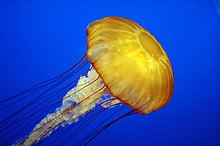 |
|
|
(Chrysaora fuscescens) |
|
| Scientific classification |
|
| Kingdom: | Animalia |
| Phylum: | Cnidaria |
| Subphylum: | Medusozoa Petersen, 1979 |
| Subgroups | |
| See text. | |
Terminology
The English popular name jellyfish has been in use since 1796.[4]It has traditionally also been applied to other animals sharing a superficial resemblance, for example ctenophores (members from another phylum of common, gelatinous and generally transparent or translucent, free-swimming planktonic carnivores now known as comb jellies) were included as "jellyfishes".[5]
Even some scientists include the phylum ctenophora when they are referring to jellyfish.[6] Other scientists prefer to use the more all-encompassing term gelatinous zooplankton, when referring to these, together with other soft-bodied animals in the water column.[7]
As jellyfish are not true fish (which are vertebrates, unlike jellyfish), the word jellyfish is considered by some to be a misnomer.
Public aquariums may use the terms jellies or sea jellies instead.[8]
The term "jellies" may have become more popular than "jellyfish".[1]
In scientific literature, "jelly" and "jellyfish" are often used interchangeably.[9] Some sources may use the term "jelly" to refer to organisms in this taxon, as "jellyfish" may be considered inappropriate.[10]
Many textbooks and sources refer to only scyphozoa as "true jellyfish".[11][12]
A group of jellyfish is sometimes called a bloom or a swarm.[13]
"Bloom" is usually used for a large group of jellyfish that gather in a small area, but may also have a time component, referring to seasonal increases, or numbers beyond what was expected.[14]
Another collective name for a group of jellyfish is a smack,[15] although this term is not commonly used by scientists who study jellyfish.
Jellyfish are "bloomy" by nature of their life cycles, being produced by their benthic polyps usually in the spring when sunshine and plankton increase, so they appear rather suddenly and often in large numbers, even when an ecosystem is in balance.[16]
Using "swarm" usually implies some kind of active ability to stay together, which a few species such as Aurelia, the moon jelly, demonstrate.[17]
Medusa jellyfish may be classified as scyphomedusae ("true" jellyfish), stauromedusae (stalked jellyfish), cubomedusae (box jellyfish), or hydromedusae, according to which clade their species belongs.[18]
The term medusa was coined by Linnaeus in 1752, alluding to the tentacled head of Medusa in Greek mythology.[4]
This term refers exclusively to the non-polyp life-stage which occurs in many cnidarians, which is typified by a large pulsating gelatinous bell with long trailing tentacles.
All medusa-producing species belong to the sub-phylum Medusozoa.
In biology, a medusa (plural: medusae) is a form of cnidarian in which the body is shaped like an umbrella, in contrast with polyps.
Medusae vary from bell-shaped to the shape of a thin disk, scarcely convex above and only slightly concave below.
The upper or aboral surface is called the exumbrella and the lower surface is called the subumbrella; the mouth is located on the lower surface, which may be partially closed by a membrane extending inward from the margin (called the velum).
The digestive cavity consists of the gastrovascular cavity and radiating canals which extend toward the margin; these canals may be simple or branching, and vary in number from few to many.
The margin of the disk bears sensory organs and tentacles.
German biologist Ernst Haeckel popularized medusae through his vivid illustrations, particularly in Kunstformen der Natur.
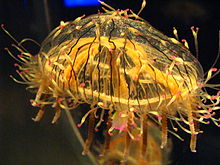
Anatomy
Diagram of the anatomy of a scyphozoan jellyfish
The major surfaces and axes of a scyphozoan jellyfish
This opens into the gastrovascular cavity, where digestion takes place and nutrients are absorbed. It is joined to the radial canals which extend to the margin of the bell, where tentacles are attached.[20]
Nematocysts, which deliver the sting, are located mostly on the tentacles; Scyphozoans also have them around the mouth and stomach.[21]
Jellyfish do not need a respiratory system since their skin is thin enough that the body is oxygenated by diffusion.
They have limited control over movement, but can use their hydrostatic skeleton to navigate through contraction-pulsations of the bell-like body; some species actively swim most of the time, while others are mostly passive.[22]
Depending on the species, the body contains between 95 and 98% water.[23]
Most of the umbrella mass is a gelatinous material — the jelly — called mesoglea which is surrounded by two layers of protective skin.
The top layer is called the epidermis, and the inner layer is referred to as gastrodermis, which lines the gut.
Nervous system
Jellyfish employ a loose network of nerves, located in the epidermis, which is called a "nerve net".[24]Although traditionally thought not to have a central nervous system, nerve net concentration and ganglion-like structures could be considered to constitute one in most species.[25]
A jellyfish detects various stimuli including the touch of other animals via this nerve net, which then transmits impulses both throughout the nerve net and around a circular nerve ring, through the rhopalial lappet, located at the rim of the jellyfish body, to other nerve cells.
Vision
Some jellyfish have ocelli: light-sensitive organs that do not form images but which can detect light and are used to determine up from down, responding to sunlight shining on the water's surface.These are generally pigment spot ocelli, which have some cells (not all) pigmented.
Certain species of jellyfish, such as the box jellyfish, have more advanced vision than their counterparts.
The box jellyfish has 24 eyes, two of which are capable of seeing color, and four parallel information processing areas or rhopalia that act in competition,[26] supposedly making it one of the few creatures to have a 360-degree view of its environment.[27]
The eyes are suspended on stalks with heavy crystals on one end, acting like a gyroscope to orient the eyes skyward.
They look upward to navigate from roots in mangrove swamps to the open lagoon and back, watching for the mangrove canopy, where they feed.[3]
Size
Jellyfish range from about one millimeter in bell height and diameter to nearly 2 metres (6.6 ft) in bell height and diameter; the tentacles and mouth parts usually extend beyond this bell dimension.The smallest jellyfish are the peculiar creeping jellyfish in the genera Staurocladia and Eleutheria, which have bell disks from 0.5 mm to a few millimeters in diameter, with short tentacles that extend out beyond this, which these jellyfish use to move across the surface of seaweed or the bottoms of rocky pools.[28]
Many of these tiny creeping jellyfish cannot be seen in the field without a hand lens or microscope; they can reproduce asexually by splitting in half (called fission).
Other very small jellyfish, which have bells about one millimeter, are the hydromedusae of many species that have just been released from their parent polyps;[29] some of these live only a few minutes before shedding their gametes in the plankton and then dying, while others will grow in the plankton for weeks or months.
The hydromedusae Cladonema radiatum and Cladonema californicum are also very small, living for months, yet never growing beyond a few mm in bell height and diameter.[30]
Another small species of jellyfish is the Australian Irukandji, which is about the size of a fingernail.[3]
The lion's mane jellyfish, Cyanea capillata, was long-cited as the largest jellyfish, and arguably the longest animal in the world, with fine, thread-like tentacles that may extend up to 36.5 metres (120 ft) long (though most are nowhere near that large).[31][32]
They have a moderately painful, but rarely fatal, sting.
Claims that this jellyfish may be the longest animal in the world are likely exaggerated; some other planktonic cnidarians called siphonophores may typically be tens of meters long and seem a more legitimate candidate for longest animal.[33]
The increasingly common giant Nomura's jellyfish, Nemopilema nomurai, found in some, but not all years in the waters of Japan, Korea and China in summer and autumn is probably a much better candidate for "largest jellyfish", since the largest Nomura's jellyfish in late autumn can reach 200 centimetres (79 in) in bell (body) diameter and about 200 kilograms (440 lb) in weight, with average specimens frequently reaching 90 centimetres (35 in) in bell diameter and about 150 kilograms (330 lb) in weight.[34][35]
The large bell mass of the giant Nomura's jellyfish[36] can dwarf a diver and is nearly always much greater than the up-to-100 centimetres (39 in) bell diameter Lion's Mane.[37]
The rarely encountered deep-sea jellyfish Stygiomedusa gigantea is another solid candidate for "largest jellyfish", with its thick, massive bell up to 100 centimetres (39 in) wide, and four thick, "strap-like" oral arms extending up to 6 metres (20 ft) in length,[38] very different from the typical fine, threadlike tentacles that rim the umbrella of more-typical-looking jellyfish, including the Lion's Mane.
Taxonomy
Jellyfish belong to Medusozoa, the clade of cnidarians which excludes Anthozoa (e.g., corals and anemones).
This suggests that the medusa form evolved after the polyps.[39]
The phylogenetics of this group are complex and evolving.
The Medusozoa and Octocorallia are proposed as sister groups according to research published in 2012.
That research also proposes coronate Scyphozoa and Cubozoa as a sister clade to Hydrozoa and discomedusan Scyphozoa, which are themselves sister groups.
The hydroidolinans are a sister group to Limnomedusae, also called Trachylina. Semaeostomae is paraphyletic with Rhizostomeae.
The class Storozoa was the earliest group of Medusozoa to diverge and the Limnomedusae were the earliest Hydrozoa to diverge.[40]
The four major classes of medusozoan Cnidaria are:
- Scyphozoa are sometimes called true jellyfish, though they are no more truly jellyfish than the others listed here. They have tetra-radial symmetry. Most have tentacles around the outer margin of the bowl-shaped bell, and long, oral arms around the mouth in the center of the subumbrella.
- Cubozoa (box jellyfish) have a (rounded) box-shaped bell, and their velarium assists them to swim more quickly. Box jellyfish may be related more closely to scyphozoan jellyfish than either are to the Hydrozoa.[39]
- Hydrozoa medusae also have tetra-radial symmetry, nearly always have a velum attached just inside the bell margin, do not have oral arms, but a much smaller central manubrium with terminal mouth opening, and are distinguished by the absence of cells in the mesoglea. The majority of hydrozoan species maintain the polyp form for their entire life cycle and do not form medusa at all (such as hydra, which is hence not considered a jellyfish).
- Staurozoa (stalked jellyfish) are characterized by a medusa form that is generally sessile, oriented upside down and with a stalk emerging from the apex of the "calyx" (bell), which attaches to the substrate. Some Staurozoa (all? - it is not known yet) also have a polyp form that alternates with the medusoid portion of the life cycle. Until recently, Staurozoa were classified within the Scyphozoa.
- Siphonophorae are an order of hydrozoa which generally live as colonies (for example, free-swimming chains of repeated units, some units similar to polyps or to medusa). They are not considered medusa jellyfish. A well-known example is the Portuguese man o' war.
- Ctenophores (comb jellies) are a separate phylum from Cnidaria. Their method of propulsion is coordinated movement of thousands of cilia used as paddles, rather than a pulsating bell, although a few species of ctenophores swim by flapping large lobes.
- Salps are transparent, gelatinous marine organisms that form pelagic colonies like siphonophores. Salps are chordates, and as such are actually more closely related to humans than they are to cnidarians and comb jellies.[41]
Many scientists who work on relationships between these groups are reluctant to assign ranks, although there is general agreement on the different groups, regardless of their absolute rank.
Here is one scheme, which includes all groups that produce jellyfish, derived from several expert sources:
Source: Wikipedia.org
Somebody Come and Play In the Traffic With Me! Earn as You Learn, Grow as You Go!
The Man Inside the Man
from
Sinbad the Sailor Man
A
JMK's Production
Share this page, If you liked It Pass it on, If you loved It Follow Me!
TTFN
CYA Later Taters!
Thanks for watching.
Donnie/ Sinbad the Sailor Man
Somebody Come and Play in "Traffic" with me. If you would like to "Join" A Growing Biz Op! Here is Your Chance to get in an Earn While You Learn to Do "The Thing" with us all here at Traffic Authority.
Simply click this link and Grow as you Go Come and Play In Traffic With Me and My Team at Traffic Authority!
Simply click this link and Grow as you Go Come and Play In Traffic With Me and My Team at Traffic Authority!
P.S. Everybody Needs Traffic! Get Top Tier North American Traffic Here!

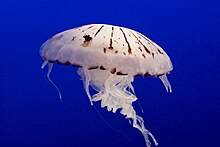
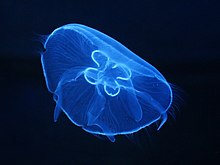
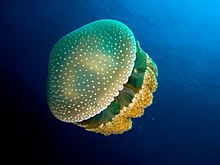

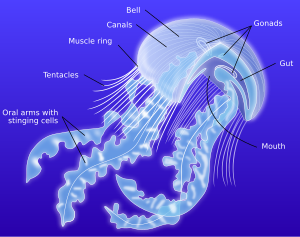
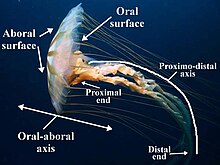



No comments:
Post a Comment